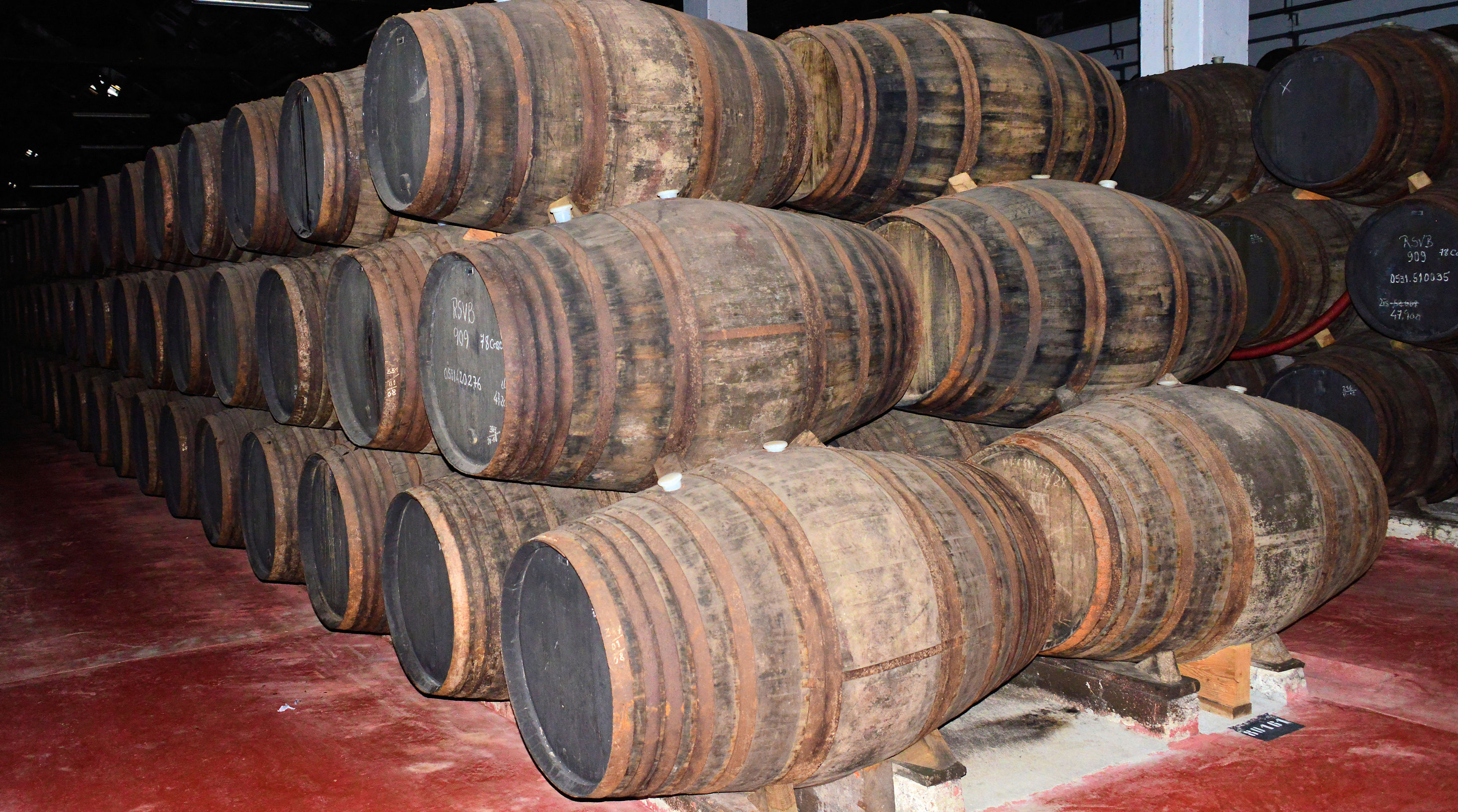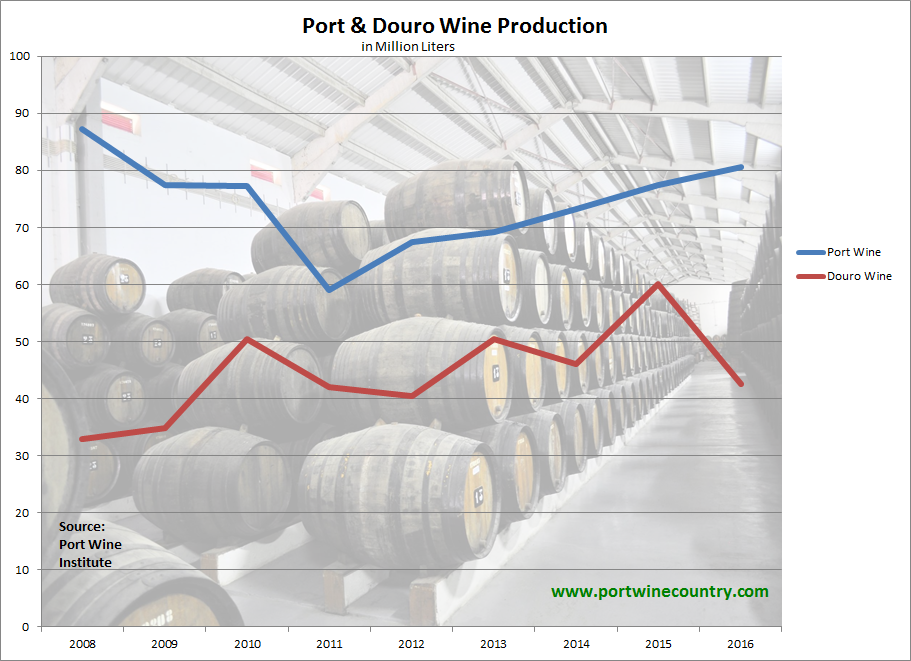However, when we look at the latest statistics published by the Port Wine Institute (www.ivdp.pt) then we see that 2016 was a terrible year for Douro Wine production. Only 42.5 million liter Douro Wine were produced in 2016… that is 30% less than in 2015. When we look at the region in more detail, then we see that it was a general decline all over the Douro Valley – but the Baixo Corgo was hit the hardest (-35%). The production of the Cima Corgo went down by 25% and the Douro Superior produced 28% less.
Was less wine produced because the demand fizzled away? Or was it that it was climate-wise just a bad year for wine?
Luckily I believe that it was the later. 2016 was a difficult year for wine producers. Or better, for wine growers. Or even better, for small wine growers. It was very difficult for small growers to get all the needed work done to protect their plants from the rain that we saw in April and May 2016.
“Graham’s” has published an amazing description of the the year 2016 that provides us with a lot of insight: https://blog.grahams-port.com/2016/10/20/2016-douro-harvest-report/
I quote from them as follows: “The wet and cool April and May made it absolutely necessary to work intensively to protect the vines. The Douro is not well suited to such a challenge, with its incredibly steep vineyards and its highly fragmented land ownership. The largest area of mountain vineyard on earth has 17,000 farmers owning less than one hectare of heavily inclined hill-side vines. Many are elderly and have neither the time nor the resources to undertake the necessary measures to protect the vines in such conditions, and it is estimated that the Douro will have produced at least 25% less wine than in a normal year. ”
So, while this is devastating news for the growers that lost quite a lot of money in 2016 it is also a little bit comforting that the production decline wasn’t due to a reduction in demand.
The interesting thing is that the production of Port Wine continues to rise. With such a reduced amount of grapes the wine companies decided obviously to reduce the production of table wine and used their best grapes for the production of Port. It’s widely anticipated that all major producers will even be launching 2016 Vintage Ports – which means that they have been able to harvest grapes of outstanding quality.
It’s a year of two tales: The small producers against the large conglomerates with all their capital and man-power… and the Douro Wine versus the Port Wine. It was possible to make great wines in 2016 – but the quantity was low. The companies took first care of the Port Wine production – and then they made the Douro Wine.
2017 so far seems to be running more or less smoothly – let’s hope it stays like this and we see a great harvest for the Douro Valley.

